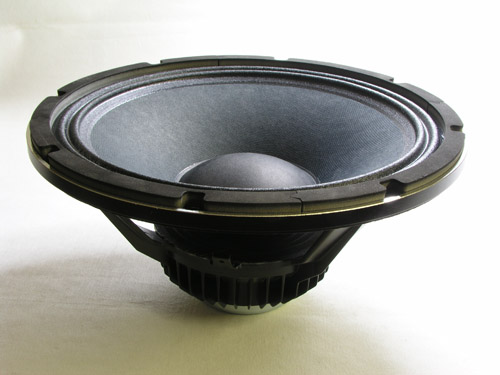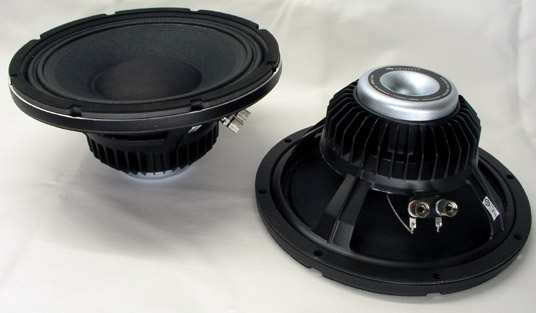|
DTQWT, 10-inch or 12-inch? |
|
I've had this question a number of times I'll try to put
together the things to consider before making your final choice.
Below I've
copied in the basic principles of DTQWT from the
DTQWT mkII
file and here's a link to the page on
Amps for DTQWT.
The TQWT and
DTQWT were
made to suit low-wattage valve amps to fit my preference for these
amplifiers. It doesn't mean they can't be driven from almost any amp but
we have to know what we're doing.
First of all: The 12" was made to play deeper, not louder. I cannot stress this enough because we inevitably regard a bigger speakers as one that should be able to play louder. This is not the case for the 12" version. The 10" version features a 40 Hz horn (check impedance curve) where the 12" version with its more than 3 meter long horn takes us down to 30 Hz. The 8008 front driver carries the full signal and is part of the speaker's bass performance. Thus, the 8008 front driver does not have a high-pass filter, which has indisputable advantages but also limits power handling. The OBL-11 speaker basically having the same drivers and crossover can play louder but requires expensive coupling capacitors for the middriver to perform the best. As always: Any speaker is a compromise between a set of design parametres. I've seen a 8008 cone ripped apart from using 400 watt solid state amp - or lending the system to childrens' disco party. Speakers having 95 dB sensitivity should simply not be fed 400 solid state watts. The voice coil was fully intact but the cone was just simply ripped apart. The other reason for this was that the speaker was supposed to energise more than 100 square metres room - or close to 250 cubic metres. This is equivalent to a smaller cinema space - and this is a completely different story. Before building speakers we need to analyse what kind of sound level we're aiming at, what is the room size - and volume, and what kind of amplifier are we going to use. Any burned speaker is a misused speaker. I've more than once made guests pretty uncomfortable by playing the first movement of Mahler's 5th at loud level, so don't think the DTQWT can't play loud. It can (in my 25 sqm living room), but we need to analyse our room and sound level requirements before deciding. And this is where I cannot help because I can't know how loud you play. The basic sound of the 10- and 12-inch version is the same due to the front drivers being the same for the 12" version and so is the crossover. The wider front panel of the 12" version may add a little to the low-end weight of the 8008 driver, but not much. Not all music contains much information below 40 Hz, but the deeper frequences we can reproduce the better we get information of the room in which the recording was made. It adds to the overall perceived soundstage. As discussed in detail here, the price for high efficiency plus low-end extension is size. Deep bass and high efficiency means huge cabinets. In principle the 12" version should display reduced distortion due to the larger size of the bass drivers and reduced cone motion and so it may be, but this is not the reason why you should choose the 12" version over the 10" version. The bass drivers of the 10" version moves very little even at seriously loud levels and distortion is not an issue. And in principle we should be able to produce the same low-end extension from the 10" version by simply extending the 10" cabinets to 1.5 meter height. I never tried this but my guess is that it will not sound exactly the same as the 12" version anyway. Large drivers have their way of loading a room that smaller speakers can't.
Basic principles of DTQWT:
DTQWT is in principle a 2-way with integrated subwoofers,
thus no high-pass filter on the main front driver. This has the
indisputable advantage of not needing any series capacitors, which
would be excessively expensive if of good quality and sonically
inferior to no caps, no matter how good the caps are.
Despite the description above, many people have trouble
understanding why we don't need bass drivers with huge Xmax and low Fs.
Please compare the combined membrane area to an e.g. 10" bass driver
in a vented cabinet with the DTQWT. Here we have some 2 x 330 cm^2
from the bass drivers and 220 cm^2 from the front driver, in total 880
cm^2. This is 2.6 times the membrane area of a single 10" driver. If a
single 10" bass-reflex loaded driver has to move +/- 5 mm, we only
need 5/2.6= +/- 1.9 mm. |

